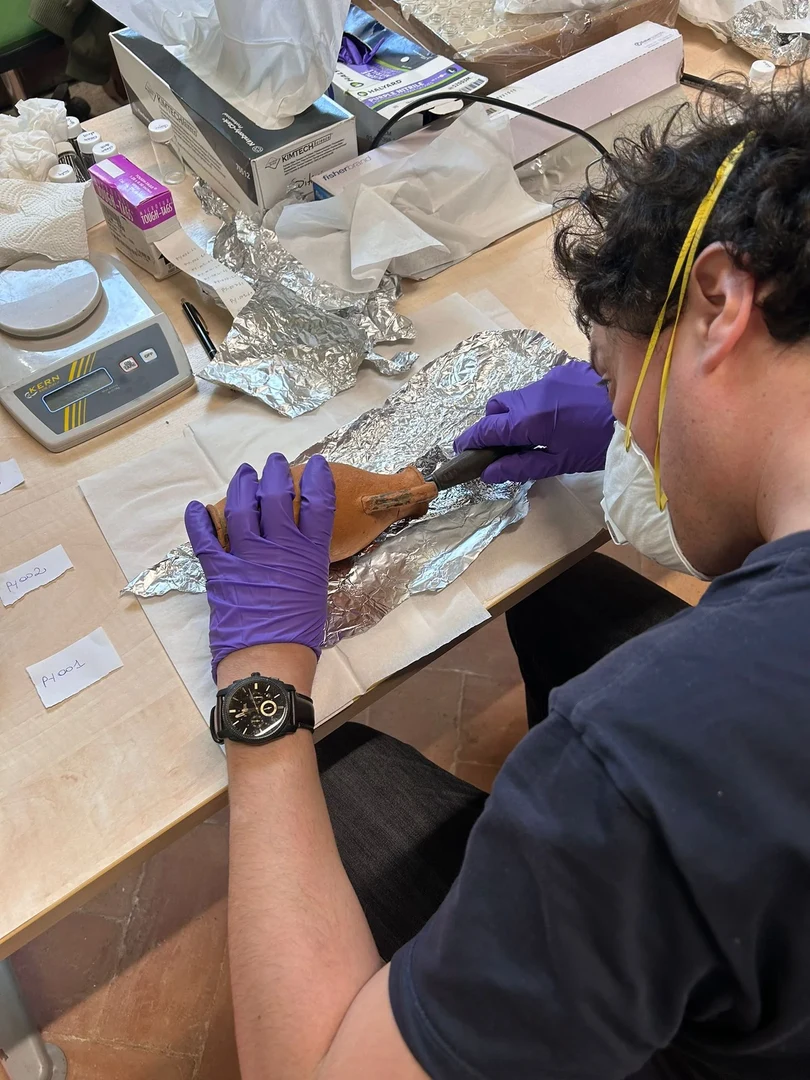Gallic, Etruscan and Phocaean Rites of Commensality (GEPRICO)

The GEPRICO project investigates commensal rites among Gallic, Etruscan, and Phocaean communities in the northwestern Mediterranean from the 6th to 4th centuries BCE. Drawing on recent archaeological discoveries from key sites across France, Italy, Corsica, and Spain, the project applies a cross-cultural comparative approach to reconstruct diverse social and ritual practices related to eating and drinking. GEPRICO also aims to illuminate the cultural meanings of commensal practices, the functions and contents of banquet vessels, and the exchange of food traditions across ancient Mediterranean societies. Through a transdisciplinary methodology and collaboration with numerous European research institutions, GEPRICO brings new insights into the archaeology of food, commensality and identity.
The University of Bonn-BoCAS contributes to GEPRICO through organic residue analysis of ancient ceramics, focusing on biomolecular traces such as fats, oils, waxes, resins, dairy, fruits and fermented beverages. These analyses, conducted by Prof. Maxime Rageot and Dr. Barbara Huber, form part of a larger interdisciplinary effort that integrates biomolecular archaeology, proteomics, palynology, and ceramic typology. The Bonn-based team focuses on four key archaeological sites:
At the heart of the ancient Phocaean colony of Massalia, two major banquet complexes – the Place des Pistoles and the Collège du Vieux-Port – have yielded rich assemblages of drinking and cooking vessels, along with remains of food waste such as oyster shells. These contexts offer unique insights into collective ritual practices of the Greek elite in Gaul.xt
The port sanctuary of Emporion, a Greek enclave on the Iberian coast, has produced evidence of ritual feasting through the discovery of kernoi, miniature vessels, and imported amphorae. The site illustrates the blending of Ionian traditions with local Iberian customs.
Located at the Etruscan port of Caere, the sanctuary of Pyrgi comprises two distinct ritual areas. Exceptional deposits of Attic pottery and banquet wares attest to large-scale ceremonial feasts, while ongoing excavations explore the intersection of political, religious, and culinary practices.
This Gallic settlement near modern-day Montpellier underwent successive cultural phases, reflecting Etruscan and later Phocaean influences. Votive pits and domestic structures reveal the persistence of commensal practices over time, culminating in ritual feasting events linked to shifting sociopolitical dynamics.
By combining biomolecular data with typological, contextual, and comparative analysis, the project sheds light on the foods, substances, and symbolic meanings that shaped ancient Mediterranean cuisines, foodways and identities.
Links
Project Management and Coordination
Project coordinator: Prof. Dr. Dominique Frère (Université Bretagne Sud)
Project co-leaders:
Dr. Habil. Federica Sacchetti, Aix-Marseille Université / CNRS (Centre Camille Jullian)
Dr. Habil. Vincent Jolivet, CNRS / AOrOc
Dr. Habil. Eric Gailledrat, CNRS / ASM Montpellier
Project Partners
Dr. Marta Santos Retolaza, Museu d'Arqueologia de Catalunya – Empúries
Prof. Dr. Giovanna Bagnasco Gianni, Università degli Studi di Milano
Prof. Dr. Laura Michetti, Università La Sapienza Roma
Bonn Team
Prof. Dr. Maxime Rageot Professor for Biomolecular Archaeology
AVZ III, 2.010
Römerstraße 164
53117 Bonn
Dr. Barbara Huber Wissenschaftliche Mitarbeiterin, ANR GEPRICO Gallic, Etruscan and Phocaean rites of commensality
2.018
Römerstraße 164
53117 53117 Bonn
Funding and project duration
Funded by the French National Research Agency (ANR), Research Program: “Culture, Creation, Heritage” (CE27)
Project duration: 2023–2026